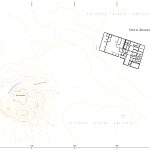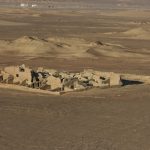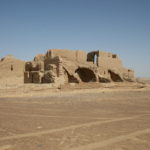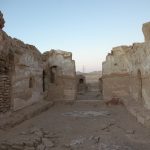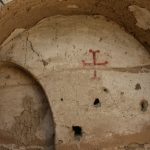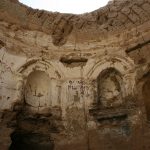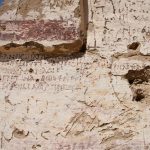DAYR AL-BAǦAWĀT
| Arabic | دير البجوات |
| English | Deir el Bagawat |
| DEChriM ID | 5 |
| Trismegistos GeoID | 61702 |
| Pleiades ID | - | PAThs ID | - |
| Ancient name | - |
| Modern name | Dayr al-Baǧawāt |
| Latitude | 25.494259 |
| Longitude | 30.550603 |
| Date from | 350 |
| Date to | - |
| Typology | Monastic settlement |
| Dating criteria | The earliest occupation phase of the site (end of 4 c.) is dated on the basis of evidence provided by the Greek ostraca found on the site. The trilingual (Demotic, Greek, Coptic) ostracological material uncovered on the site (a situation encountered also at Dūš and ʿAyn Saʿaf, sites from the same oasis); the type of documents (e.g. lease agreements, similar to those found at Dūš and ʿAyn al-Wāqifa); the onomastics/prosopography (including names attested at Dūš and ʿAyn al-Wāqifa); and metrology (including several units well attested on 4 c. sites both in Kharga and Dakhla) point towards an occupation in the second half of 4 c. A radiocarbon age obtained for mudbricks gives the range 332-426 (Ghica 2012: 203, n. 68). |
| Description | Dayr al-Baǧawāt is a monastic complex situated 250m west of Dayr Muṣṭafā Kāšif, and 1.5km north of the northernmost documented remains of the ancient town of Hibis on the site of ʿAyn al-Ṭurba. Alongside Dayr Muṣṭafā Kāšif, ʿAyn Ǧallāl and ʿAyn Saʿaf-East, it belongs to the ‘monastic belt’ of ancient Hibis. Despite the remarkable state of preservation, the scientific investigations conducted here have been surprisingly limited. Architecturally, there are two distinct buildings: an original main building in the east, partially built on two levels, and a later added courtyard in the west, containing a series of annexes (Ghica 2012: 203). While a later addition, this courtyard appears to have been constructed not long after the construction of the main eastern building. The single phase of construction of the eastern building, indicated by the lack of modifications and additions, indicates a rather short period of occupation (Ghica 2012: 204). Based on dates retrieved from 14C analysis conducted by the Institut français archéologie orientale, the structure is understood to have been erected between 332 and 426, making it not only the first monastery founded in the oasis, but one of the oldest known in Egypt (Ghica 2012: 203; Ghica 2019: 132). The relatively brief occupation period is subsequently understood to have ended in the mid-fifth century, potentially contemporaneously with the desertion of the city of Hibis to the north as a result of Nobatian raids (Ghica 2012: 206). The main building in the east is clearly divided into two distinct living spaces (Ghica 2019: 133). The north half consists of two refectories, a kitchen, seven stores and a number of other undetermined spaces, consequently indicating a homogenous group of functional premises. The southern half, on the other hand, appears to have been reserved for housing and prayer, containing, among others, a church and a number of cells. The plan of the upper floor is partly indistinguishable, but it comprises at least two larger vaulted chambers (Ghica 2012: 204). The plan of the church is of particular interest in that it shows features – such as a particularly wide nave considering the size of the church – unique even in the church architecture of the Western Desert, and also reflects the specificities of monastic architecture (Ghica 2012: 204). A large number of Coptic and Greek graffiti and dipinti are preserved at Dayr al-Baǧawāt, predominantly on the walls of the church. Accompanying this, are a small cache of Greek, Coptic and Demotic ostraca which were found in the floor of what was likely the bedroom of the head of the monastery, one of which, dating to the fourth-fifth century, alludes to agricultural activities the monastery was likely involved in (Ghica 2012: 204). Apart from a single inscription published by R. Bagnall, and re-printed in an article of the Kharga Oasis Coptic Graffiti Project, this graffito remains unpublished (Bagnall 2001: 263; Cruz-Uribe, Piccione, Westerfeld 2004: 43-44). |
| Archaeological research | The first description of the site was not published until the second half of the twentieth century by Müller-Wiener (1963: 124, fig. 2). It is unknown if the site was visited in the early twentieth century. This was followed by a brief and partially inaccurate presentation of the site in the mid-2000s by the Kharga Oasis Coptic Graffiti project (Cruz-Uribe, Piccione, Westerfeld 2004: 40-41). The Institut français d’archaéologie orientale then conducted a number of epigraphic and topographic missions in 2007 (V. Ghica and D. Laisney) and in 2008 (V. Ghica and J. Westerfeld). Excavations were carried out on the site between 1990 and 1995 by the local inspectors of the Supreme Council of Antiquities. Unfortunately, however, no excavation reports were published and no other documentation from these excavations exists. Personal correspondences between V. Ghica and ʿA.ʿA.Ḫ. ʿAbd al-ʿAzīz, the director of the SCA excavations, have been able to provide a considerable amount of information (Ghica 2012: 203). |
• Bagnall, R. S. 2001. “A Coptic Graffito From the Valley Building at Deir Mustafa Kashef.” In Essays and Texts in Honor of J. David Thomas, edited by T. Gagos and R. S. Bagnall, 263. Atlanta: ASP.
• Cruz-Uribe, E., P. Piccione and J. Westerfeld. 2004. “Kharga Oasis Coptic Graffiti Project. Preliminary Report of the 2005 Field Season.” Journal of the Society of the Studies of Egyptian Antiquities 31: 37-48.
• Ghica, V. 2012. “Pour une histoire du christianisme dans le désert Occidental d’Égypte.” Journal des savants 2012/2: 189-280.
• Ghica, V. 2016. “Vecteurs de la christianisation de l’Égypte au IVe siècle à la lumière des sources archéologiques.” In Acta XVI Congressus Internationalis Archaeologiae Christianae, Rome 22-28.9.2013, edited by O. Brandt and G. Castiglia, 248-249 & fig. 9c. Città del Vaticano: Pontificio Istituto di Archeologia Cristiana.
• Ghica, V. 2019. “L’archéologie du monachisme égyptien au IVe siècle: État de la question.” In Nag Hammadi à 70 ans, qu’avons-nous appris? Nag Hammadi at 70: What Have We Learned? Colloque international, Québec, Université Laval, 29-31 mai 2015, edited by E. Crégheur, L.Painchaud and T. Rasimus, 132-134. Leuven-Paris-Bristol: Peeters.
• Muüller-Wiener, W. 1963. “Christliche Monumente im Gebiet von Hibis (el-Kharga).” Mitteilungen des Deutschen Archäologischen Instituts. Abteilung Kairo 19: 121-140.


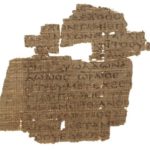
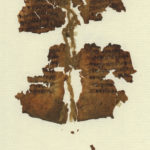


 Json data
Json data